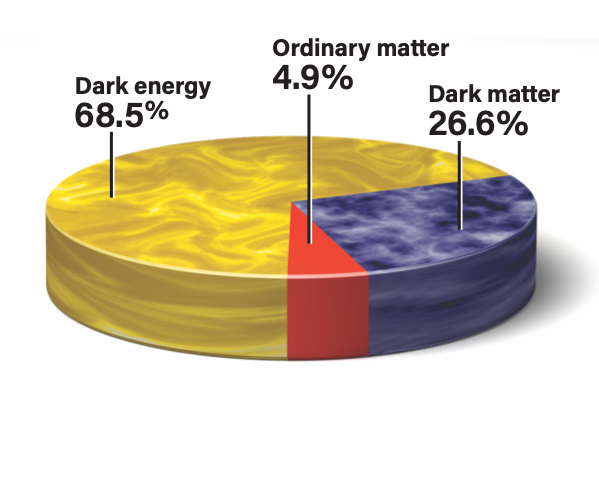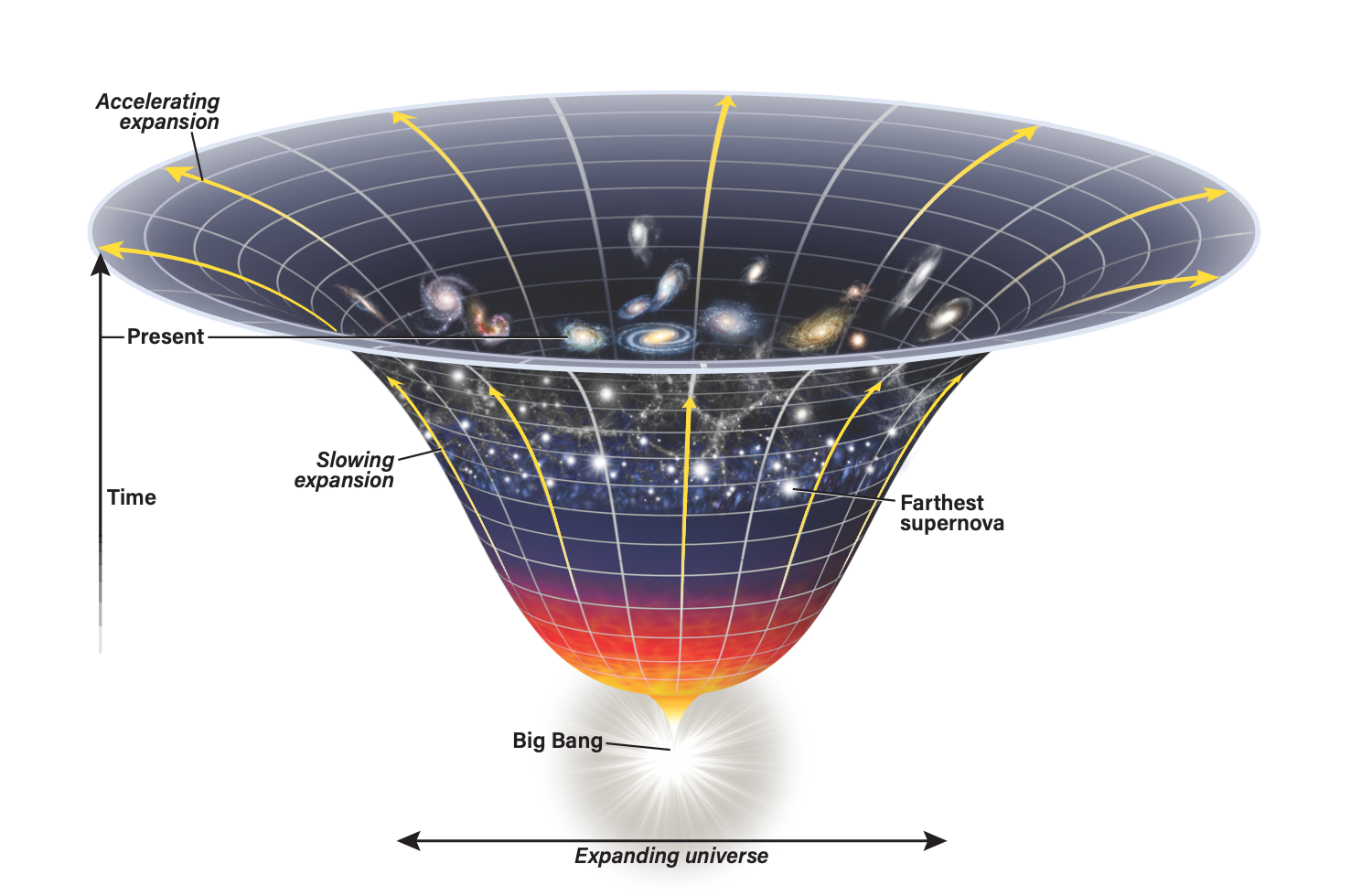
Are the percentages of dark matter and dark energy stable, or is the ratio of dark matter to dark energy to observable matter changing?
Charles Martin
The Villages, Florida
All the atoms and radiation in the universe make up less than 5 percent of its contents. The rest is composed of two invisible, enigmatic entities: dark matter and dark energy. Together they govern the behavior of the universe.
Evidence for dark matter has been accumulating for 50 years. It makes up most of the mass of all galaxies, including the Milky Way, controls the organization of galaxies on the largest scales, and represents 27 percent of the universe. The visible parts of galaxies are outweighed by dark matter, which holds galaxies together. Dark matter exerts gravity but doesn’t interact with light.
Astronomers still don’t know what dark matter is, but they’ve eliminated many possibilities: It can’t be made of black holes, dim stars, free-floating planets, space rocks, or dust particles. That leaves fundamental subatomic particles as the only option. (The alternative is to decide that the law of gravity needs altering, but this is unpalatable to most astronomers.)
Dark energy is causing the universe to expand at an ever-faster rate. It represents 68 percent of the universe. The discovery of dark energy in the 1990s was a surprise, because the expectation in cosmology had been that the gravity of all the matter in the universe would slow down the expansion discovered by Edwin Hubble. Think of the universe as having a brake (gravity) and an accelerator (dark energy), with both being pushed at the same time. Currently, the accelerator is twice as strong as the brake, so the universe is accelerating.
We know far less about dark energy than dark matter, but it seems to be a property of space. Physics tells us that space is not nothing — it has the potential to create energy. Albert Einstein formulated a version of his gravity theory where the energy in empty space is not diluted as space expands. As more space comes into existence, more space energy appears, causing the universe to expand faster and faster. So, the idea that the amount of dark energy grows as the universe expands has been around for a while. But we still lack a physical explanation to test this idea.

Are dark matter and dark energy stable and constant? Since we don’t understand their true physical nature, we can’t be sure. But astronomers can see if they vary depending on which direction in space they look. This is a test of whether the universe is lopsided or the same everywhere (the physics term for this is isotropic). It turns out that the amount of dark matter surrounding galaxies is the same in every direction, and the strength of dark energy is also the same in every direction.
To see whether the influence of dark matter and dark energy has changed over cosmic time, astronomers look deep into space. Distant light is old light, so telescopes act as time machines, probing billions of years into the past. By measuring the redshift and brightness of distant objects, astronomers map out the expansion history of the universe. Dark matter dominated for most of that history since the Big Bang. That’s because when the universe was smaller, the gravity exerted by dark matter was stronger, while the force exerted by dark energy has stayed the same. Now is the only time in the entire history of the universe when the two entities’ influences are about equal. In the future, the effects of dark energy will increasingly dominate, and the universe will accelerate forever.
Chris Impey
Distinguished Professor, Department of Astronomy, University of Arizona, Tucson









